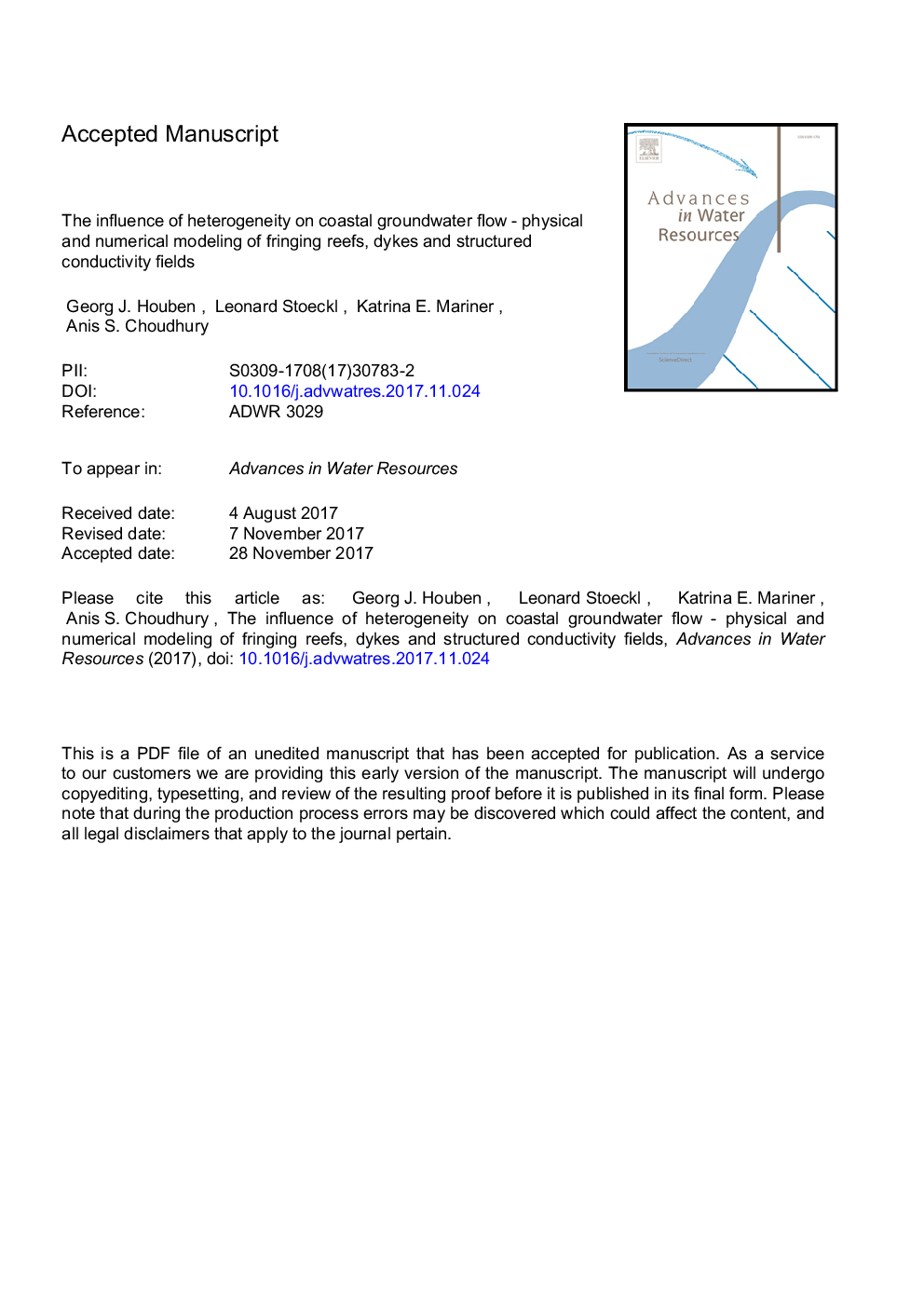| Article ID | Journal | Published Year | Pages | File Type |
|---|---|---|---|---|
| 8883355 | Advances in Water Resources | 2018 | 42 Pages |
Abstract
Geological heterogeneity of the subsurface, caused by both discrete features and spatially distributed hydraulic conductivity fields, affects the flow of coastal groundwater. It influences the shape and the position of the interface between saltwater and freshwater, as well as the location and flux rate of freshwater discharge to the ocean. Fringing reefs lead to a bimodal regime of freshwater discharge, with discharge at the beach face and through deeper, submarine springs. Impermeable vertical flow barriers (dykes) lead to an impoundment of fresh groundwater and a compartmentalization of the aquifer but also to a delayed expulsion of saline water. Spatially distributed conductivity fields affect the shape of the interface and the geometry of the saltwater wedge. Higher effective conductivities lead to a further landward intrusion of the wedge toe. These flow characteristics can be important for groundwater extraction, the delineation of protection zones and the assessment of contaminant transport to coastal ecosystems.
Related Topics
Physical Sciences and Engineering
Earth and Planetary Sciences
Earth-Surface Processes
Authors
Georg J. Houben, Leonard Stoeckl, Katrina E. Mariner, Anis S. Choudhury,
